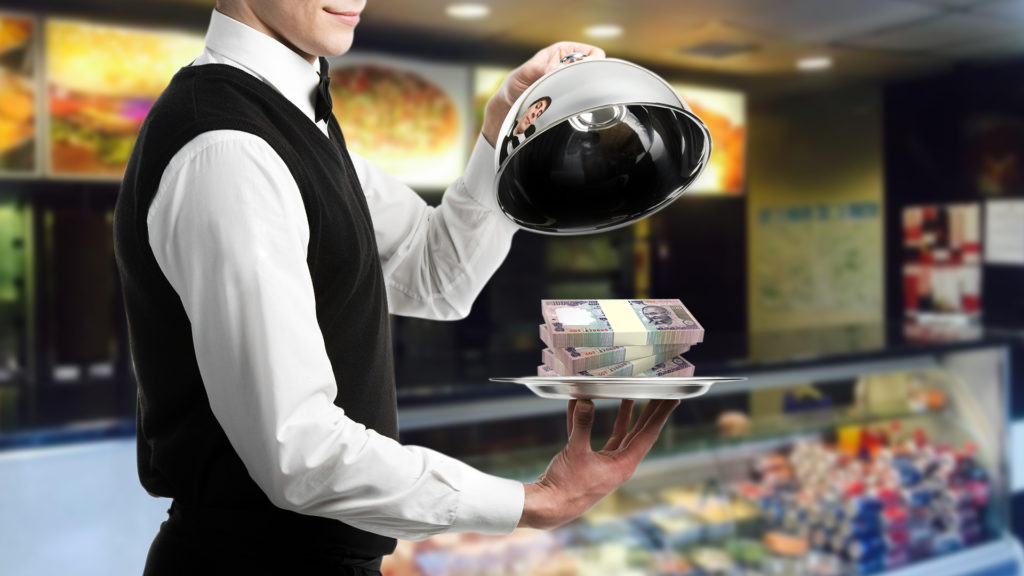Eating out, generating jobs, fuelling economy
Eating out boosts tourism, generates jobs and fuels the economy, and the activity is exponentially increasing among the billion plus Indians. Is India ready to unlock its growth potential? To do so, India needs a clear road map ahead.
Eating out in India is no more an experience. It is part of a daily regimen and ritual of the growing middle class in India.
Globally, India is seen as one of the key consumer markets from where future growth is likely to emerge. As more people move beyond the basic sustenance level in any country, it reflects in the consumption expenditure.
It is estimated that India’s consumption expenditure will increase to INR 13 trillion by 2020, and will surpass the consumption expenditure of developed economies, such as Italy, France and the United Kingdom.
Drivers of the Indian food industry: Several factors are fuelling the food processing and service industry in India. Changing cultural dynamics and family structures have resulted in the creation of multiple households. This is one of the drivers putting India today under the global spotlight for consumption-oriented sectors.
India is the second largest urban community in the world after China, with an urban population of about 430 million (2015). It is estimated that by 2020, 35 pc of India’s population will be living in urban centres and will contribute to 70-75 pc of India’s GDP. Though India ranks 11th from the bottom in terms of Female Labour Force Participation (FLFP), its proportion of women in private-sector companies is 24.5 pc (2011) of the total workforce compared to just 17.9 pc of the public sector. Therefore, with the increasing proportion of women in the working population, there is a disruption in Indian kitchens. The trend and demand for home-cooked meals is decreasing.
Key trends that are gaining traction in the food services space include virtual kitchens and ready-to-cook players. Ordering-in has become an integral part of the eating experience and several logistic players are providing last-mile delivery for restaurants. Thus, food services is emerging as a key contributor to the Indian economy, including employment generation, skill development, growth in the allied industries, entrepreneurship, tourism and creating experiences for the Indian consumer.
Immense growth potential: The Indian food sector has emerged as a high-growth and high-profit sector according to a FICCI–Technopak report, Indian Food Services Industry: Engine for Economic Growth & Employment – A Roadmap for Unlocking Growth. The report was released by Pawan Kumar Agarwal, chief executive officer, Food Safety and Standards Authority of India (FSSAI), at ‘Foodzania’, the food service retail conclave organised by the industry chamber in Delhi on Tuesday. Food Services emerge as a key segment in the Indian economy. The Indian food services market (organised and unorganised) is estimated at INR 3.36 trillion in 2017 and is projected to grow at a CAGR of 10 pc over the next five years, to reach INR 5.52 trillion by 2022.
Two mega metros, Mumbai and Delhi NCR, contribute to 22 pc of the overall food services market (11 pc each) followed by six mini metros (Pune, Ahmedabad, Bengaluru, Chennai, Hyderabad and Kolkata) comprising 20 pc share in the food services market.
The food services sector is expected to have generated direct employment for 5.5–6 million people in the financial year 2016, which is expected to increase to 8.5–9 million by the financial year 2021. Indirect employment has seen a growth at CAGR of four per cent from 2013–2016 and expected to grow six pc till 2021.
Challenges: One of the critical issues with eating out in India is that of hygiene. “FSSAI License is mandatory for the sale of food products to ensure the health and safety of the consumers,” Agarwal asserted. Keen to simplify the compliance processes, the FSSAI CEO noted that it is mandatory for all food businesses—caterers, manufacturers, companies transporting food items and retail outlets— with 25 or more people handling food to have at least one trained ‘food safety supervisor’. The supervisor should be trained under the Food Safety Training and Certification Programme (FoSTaC), designed by the Food Safety and Standards Authority of India (FSSAI). The supervisors would be responsible for ensuring that food quality is maintained.
Poised to witness a sea change in the coming years, the Indian Food and Beverage services faces several issues on account of infrastructure bottlenecks, multiple laws and regulations, skill gap, and so on.
To cite an example, a player in India needs approximately 12–15 government licenses, from various departments, just toopen an outlet. In comparison, the licensing requirements internationally are not as complex and cumbersome.
The road ahead for the Indian Food Services Industry is quite promising. Hope the report serves as food for thought for the Indian government.










